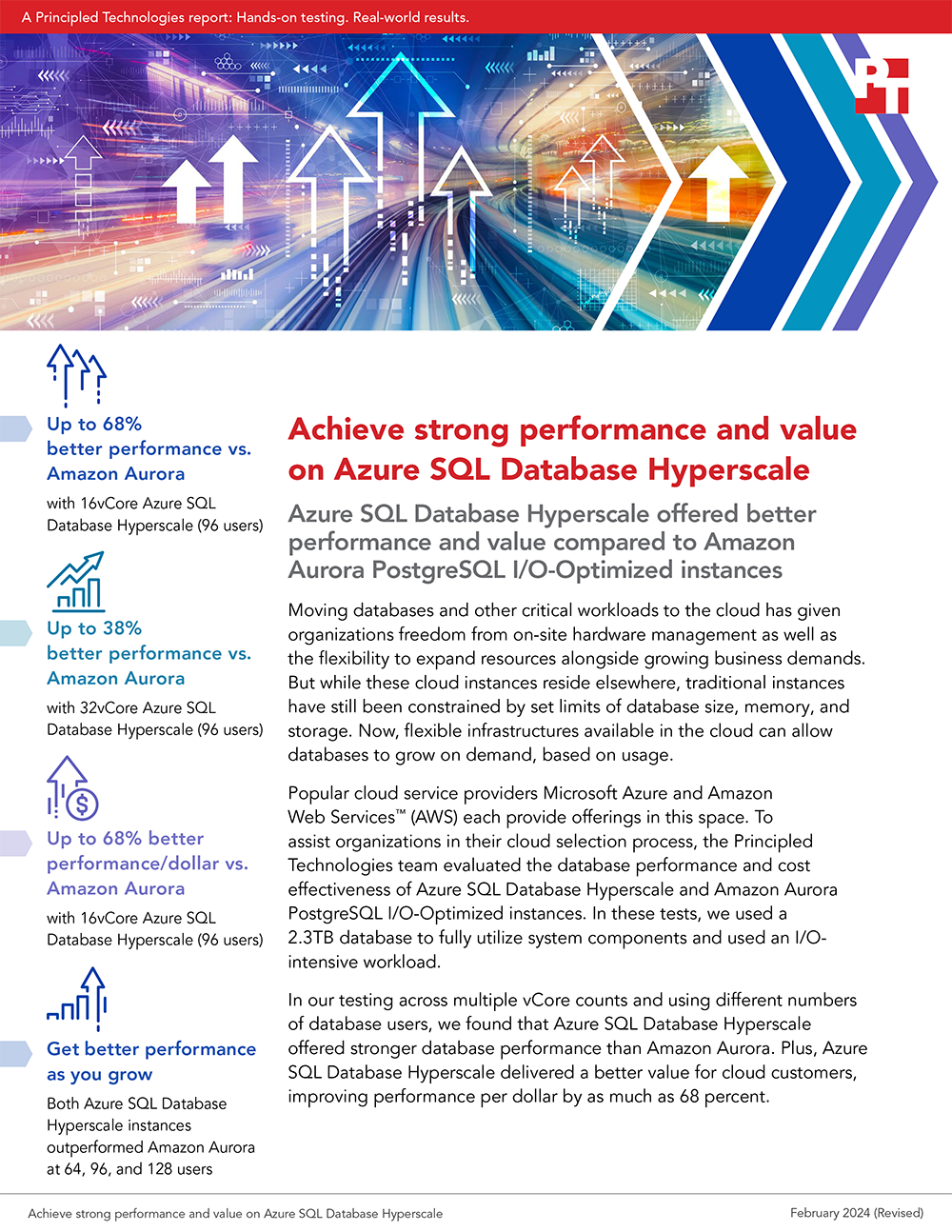
Scalable cloud-based database systems can provide businesses with the flexibility they need to meet growing demand without being tied to the resource limitations of traditional cloud allotments. But access to more resources may not translate into performance and value that scales well with growth. For organizations that can benefit from scalable cloud database services, it’s important to know that the solution they choose will deliver consistent performance as their needs grow without incurring unnecessary costs.
To help provide potential cloud-service buyers with objective comparison data, we evaluated the database performance and cost-effectiveness of Microsoft Azure SQL Database Hyperscale and Amazon Aurora PostgreSQL I/O-Optimized cloud instances. To gauge performance, we used the I/O-intensive HammerDB TPROC-C online transaction processing workload to measure the number of new orders per minute (NOPM) that each instance processed. We tested both instances with multiple vCore and user count scenarios to show how performance may change as compute resources and workload sizes scale. In our tests, Azure SQL Database Hyperscale offered significantly better NOPM performance than Amazon Aurora across the board.
When we factored in instance pricing, we found that Azure SQL Database Hyperscale delivered a better value for cloud customers in each configuration we tested, improving performance per dollar by as much as 68 percent. With stronger raw performance and performance per dollar that scaled with growth in our tests, Azure SQL Database Hyperscale may serve as a cost-effective database performance boost for growing businesses.
To dig into the details of our scalable cloud database comparison tests and conclusions, check out the report below.
Principled Technologies is more than a name: Those two words power all we do. Our principles are our north star, determining the way we work with you, treat our staff, and run our business. And in every area, technologies drive our business, inspire us to innovate, and remind us that new approaches are always possible.






